#MemberMonday: Feeding San Diego
August 1, 2022
We do not offer food. Here’s where you can find food.
No distribuimos alimentos. Encuentre comida gratis aquí.
我們不直接提供食物,但我們能幫助您找尋食物。
This year, Feeding San Diego is celebrating 15 years of service, and more than 300 million meals distributed in San Diego County. Established in 2007, Feeding San Diego is the Feeding America affiliate in San Diego County. Last year, the organization provided more than 40.3 million meals to children, families, older adults, college students, military families, and veterans. More than 70% of the food provided to the community was rescued from local and national food donors. By diverting high-quality food from the landfill and reducing greenhouse gas emissions, Feeding San Diego is taking care of people and the planet.
With a population of over 3.3 million, San Diego County covers a range of diverse communities with unique needs. Feeding San Diego’s flexible, decentralized approach to food rescue and distribution allows them to serve the county efficiently. They work with more than 400 community organizations, including local charities, schools, faith communities, meal sites, and food pantries, to reach those facing hunger, from the border with Mexico to the rural communities further inland.
San Diego County is also home to one of the largest concentrations of veterans and military personnel in the world. Over 1.2 million San Diegans, 37% of the county’s population, have direct ties to the military. For many stationed in San Diego, the cost of living can cause substantial hardship. Earlier this year, ahead of Memorial Day, Feeding San Diego held a food distribution at an elementary school on a local military base. With the help of school staff, volunteers distributed nutritious food to more than 200 military families who live on Camp Pendleton. This distribution was part of Feeding San Diego’s Feeding Heroes initiative, seeking to serve and support military families and veterans.
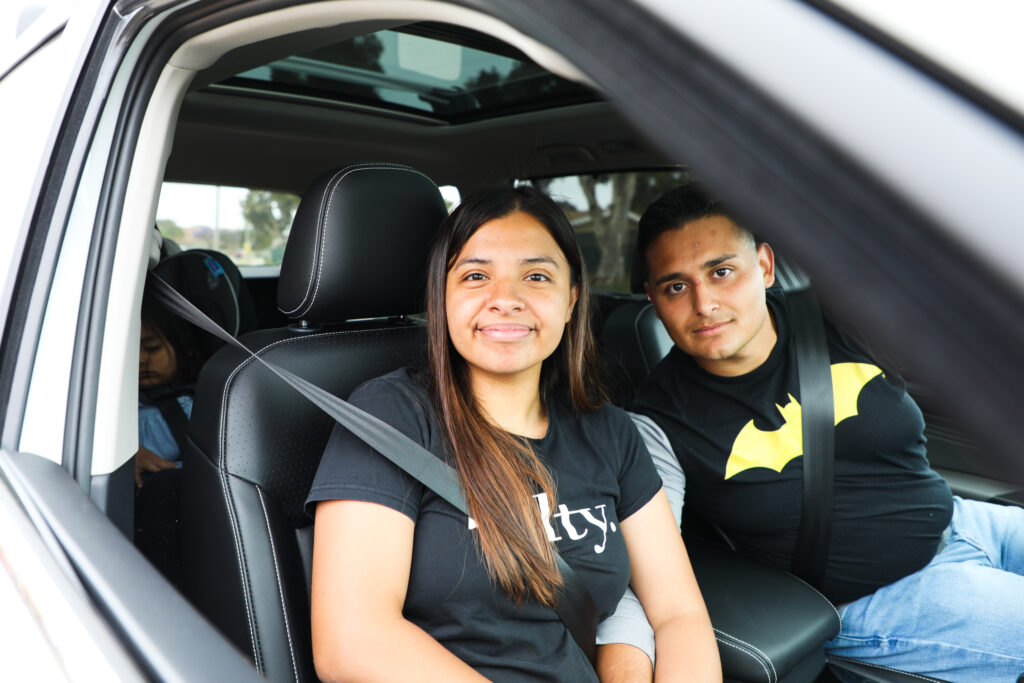
Steve received orders in 2019 that brought him and his partner, Judith, to San Diego. “We moved from North Carolina, so in comparison, the cost of living is quite a jump. It’s really expensive here. The military can adjust you a little bit on the pay, on the BAH [Basic Allowance for Housing], but most of the time, it’s not enough to compensate for the move or the basic rents. So, these types of things help.” They attended the Memorial Day distribution with their 2-year-old and expressed their gratitude for the resource. “We’re really thankful for the support of our troops, not only to our family but every family that has benefitted from any drives like this.”
Back in February 2021, Feeding San Diego launched the Together Tour, a series of large-scale, drive-through food distributions held in massive parking lots across San Diego County to meet the staggering need for food assistance created by the COVID-19 pandemic and the ensuing economic fallout. Less than a year later, the organization hit the bittersweet milestone of the 100th Together Tour distribution and is continuing these distributions to this day. This year, the lines at these distributions have only gotten longer, not shorter. In fact, June 2022 was the single largest attendance month on record, with more than 8,700 families served via Together Tour distributions.
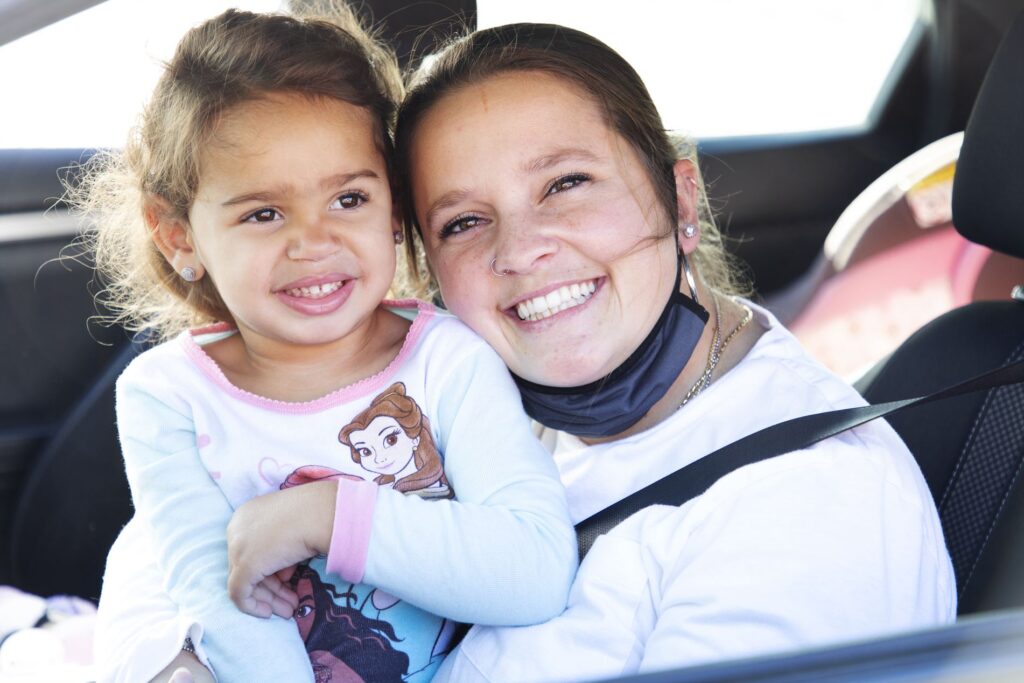
Sydney shared her story with the Feeding San Diego team when she attended a Together Tour food distribution. “I have six in my household, and then I pick up for my cousin who has four in her household. It’s amazing the stuff that comes in the boxes. My mom signed us up for the distribution, and we’ve been doing it ever since. It has helped tremendously. I adopted my sister’s three kids, so Simone is my niece, but now they’re mine, all three of them.”
Sydney has seen the effects of COIVD-19 and inflation on food prices firsthand. “I work at the grocery store, and I have completely seen the drastic change in prices on things. After COVID hit, everything skyrocketed, and it’s just hard. It gets hard. Then gas on top of that, it just gets harder and harder. I just want to say thank you for everything because if it wasn’t for them, it gets tough.”
Like all food banks, Feeding San Diego saw a drastic drop in volunteers during the pandemic. In 2021 (fiscal year), the organization saw just 10% of the volunteer base they had the previous year, primarily longtime recurring volunteers who devoted more time to the organization during the pandemic. The team is working to build back up the volunteer base and has a variety of volunteer shifts in addition to the core shifts at its distribution center, of which there are four every day, six days a week. Other volunteer programs they are actively recruiting for are MealConnect drivers, who pick up rescued food from grocery stores, and the Together Tours, where volunteers check people in and distribute the food to attendees.
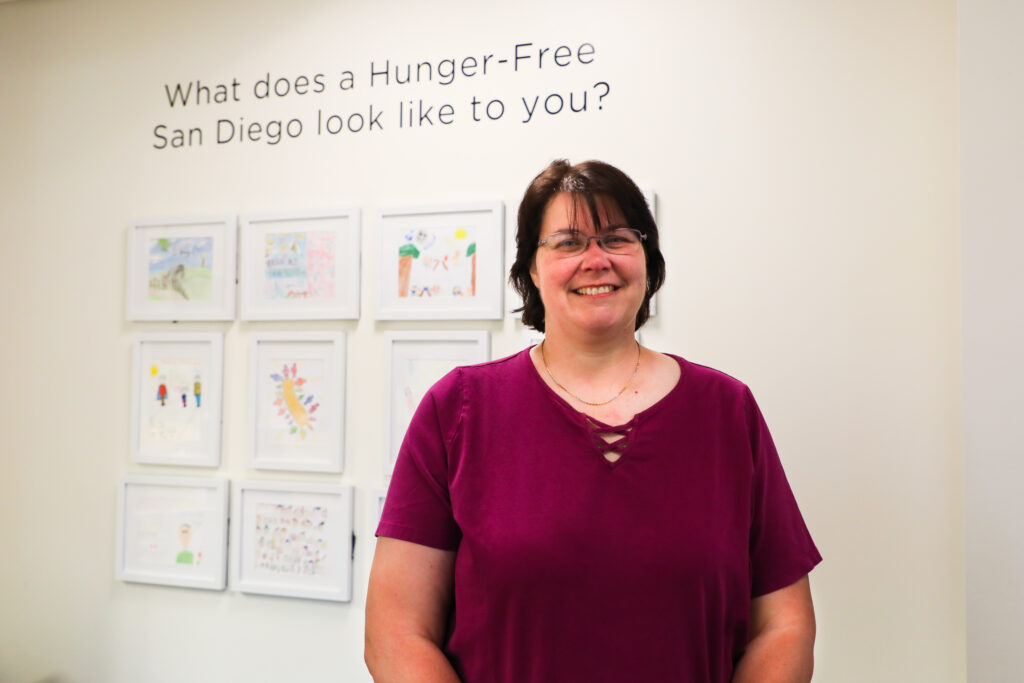
Carmelle has been volunteering with Feeding San Diego nearly the entire time the organization has been in operation. “I’ve been volunteering at Feeding San Diego for about 14 years. I think I’ve rallied up over 1,000 hours of volunteer work so far.” She has seen the changes within the organization over the years and marvels at the experience of distributing food at the Together Tours. “In the warehouse, you’re packing boxes, you’re gleaning produce. But on these tours, you’re actually handing it out to the people. It’s really inspiring to hear it when we’ve got people picking up for neighbors, picking up for patients. We’re all kind of looking out for each other. Volunteering is a chance to give back to help each other out. That’s what it’s all about.”
Despite rising inflation and staggering gas prices, many pandemic-era food assistance programs are coming to a close. A partner reached out to Feeding San Diego with this very problem: they could no longer deliver food to the area around Feeding San Diego’s headquarters. In response, Feeding San Diego launched a brand-new Marketplace program. Community members can “shop” in the Feeding San Diego Marketplace for free produce and pantry staples. They can also order ahead and pick up their order without entering the building.
One community member who picks up from the Marketplace is John, who is retired from the Navy and has several health issues from an injury that make daily tasks difficult. He lives on a fixed income, made up of his military retirement and disability. He rents a room in a house nearby, and recently his son and his family — including two grandkids — moved in while they save up to try to buy their own house. He likes to pick up food for his grandkids.
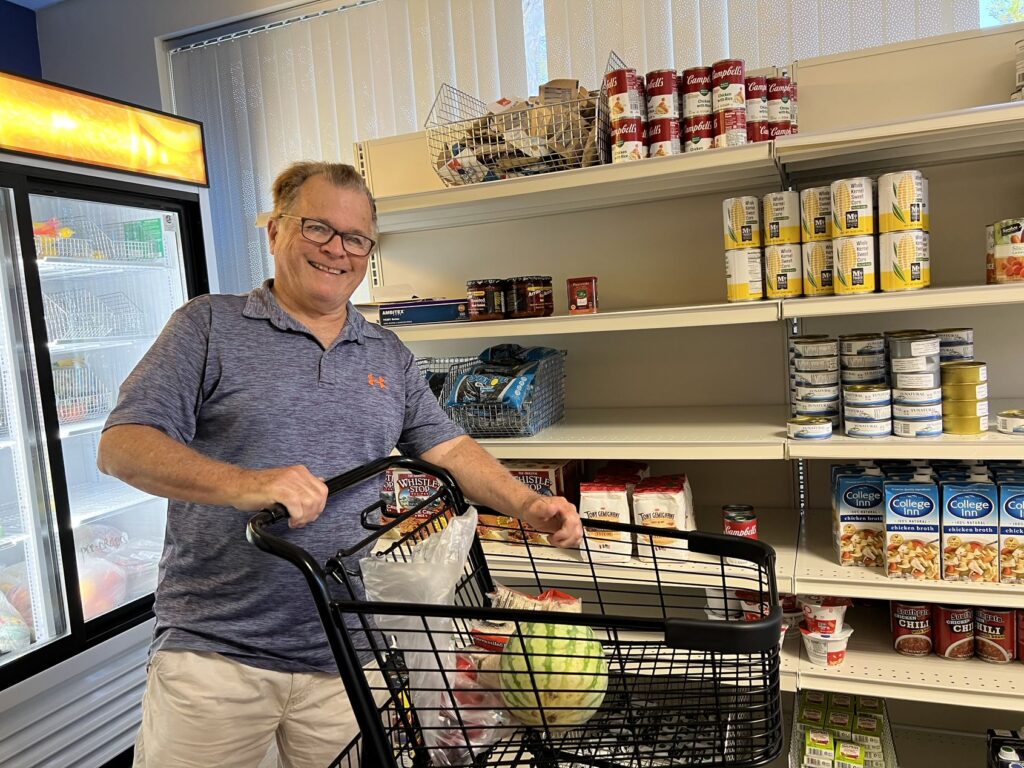
“It is helping people out that need food. There are actually a lot of people, more and more, coming here,” said John, who lives in Mira Mesa and has been coming to the marketplace on a weekly basis. “We’re not starving, but it really helps out so I can eat fruits and vegetables. Without this, it would be pretty tough. Especially with inflation.” The goal of the Feeding San Diego Marketplace is to offer convenient food assistance and a dignified experience for those in the local community who need a bit of help.
In addition to distributing food to those in need, Feeding San Diego works to raise awareness about the hunger crisis and break down the stigma around the need for food assistance. They recently launched a unique initiative with the Comic-Con Museum geared at mobilizing young people in the community. Their Hunger Action Hero Art Contest invited K-12 students from around the county to create their very own Hunger Action Heroes. Out of nearly 300 entries, two heroes were chosen and brought to life by costume designer Allan Lavigne, head of The Bronze Armory Studios: Hunger Halter by 14-year-old Aiden Prior and Demeter by 17-year-old Sirenna Acencio. Aiden and Sirenna met their heroes in person during San Diego Comic-Con. The costumes will be on display at the Comic-Con Museum in San Diego, and the heroes will make appearances in future Feeding San Diego campaigns to help educate youth on the importance of hunger relief and food rescue.
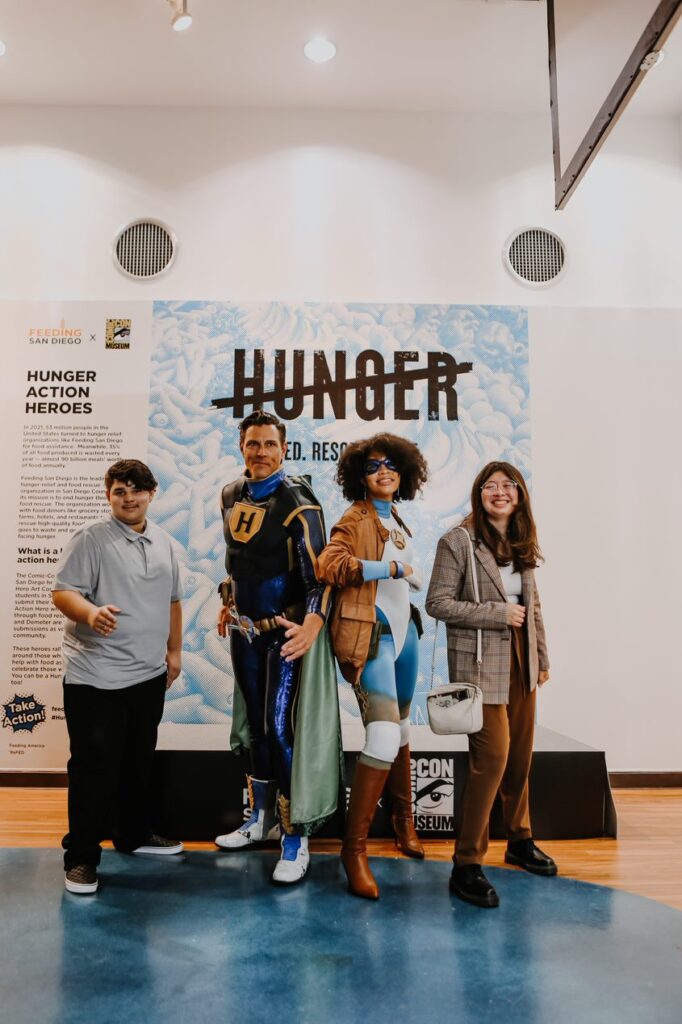
Being a CAFB member food bank is “highly advantageous for Feeding San Diego, particularly for the supply chain team,” states Christina Gunning, Feeding San Diego’s Marketing & Communications Coordinator. Two areas, sourcing and advocacy, are especially important for the organization.
“If it weren’t for the rescued produce from farms that CAFB sources and shares with its members, we wouldn’t be able to distribute so much produce. Our target is for at least 50% of the food we distribute to be fresh produce, and with our partnership with CAFB, we are closing in on that goal,” says Patty O’Connor, Feeding San Diego’s Chief Supply Officer. “In the world of food banking, where last-minute donations are the norm, it’s really helpful that with CAFB, we’re able to plan our incoming produce in advance.”
CAFB delivers 30 full truckloads to Feeding San Diego every month, which adds up to over a million pounds of produce.
“It’s also an amazing resource to have a direct line to CAFB’s robust advocacy team,” states Patty. “The team supports hunger relief legislation and provides vital information to its members, and Feeding San Diego relies on this information for decision making and external communications.”
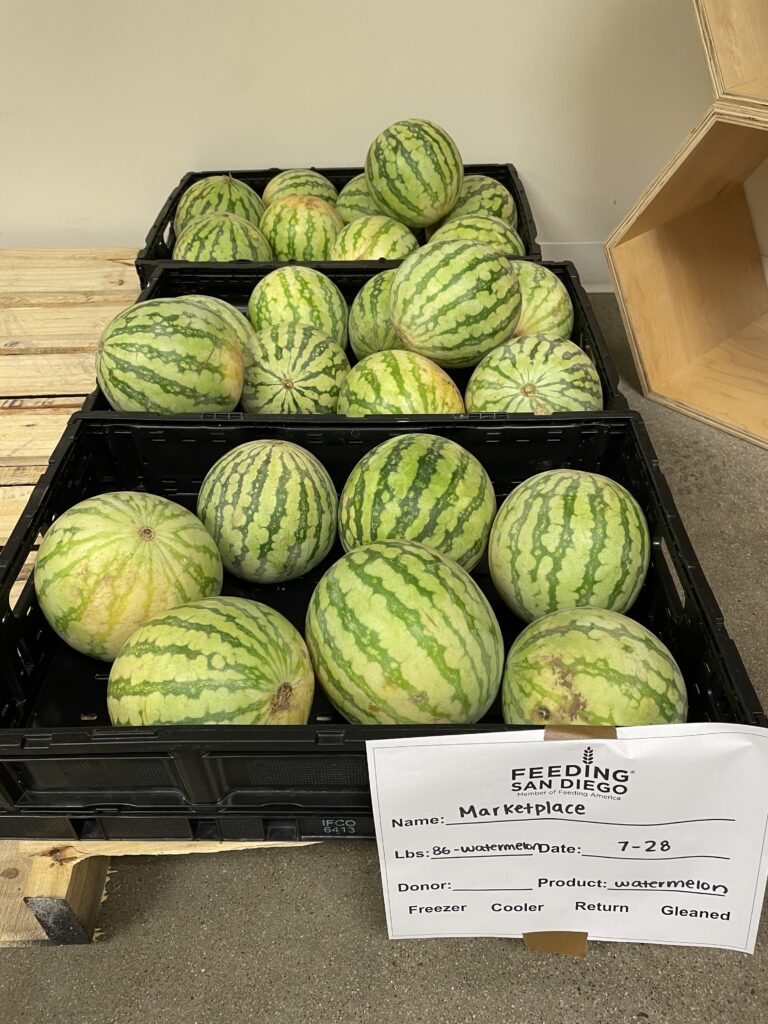
You can get involved with Feeding San Diego and learn more about their mission at their website, and follow them on Facebook, Twitter, and Instagram.